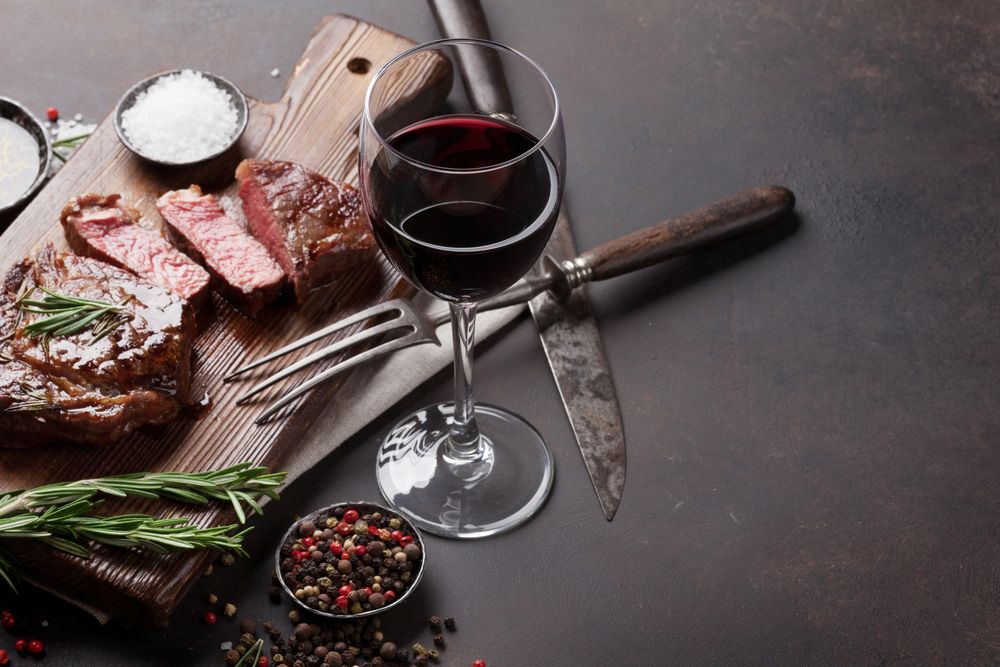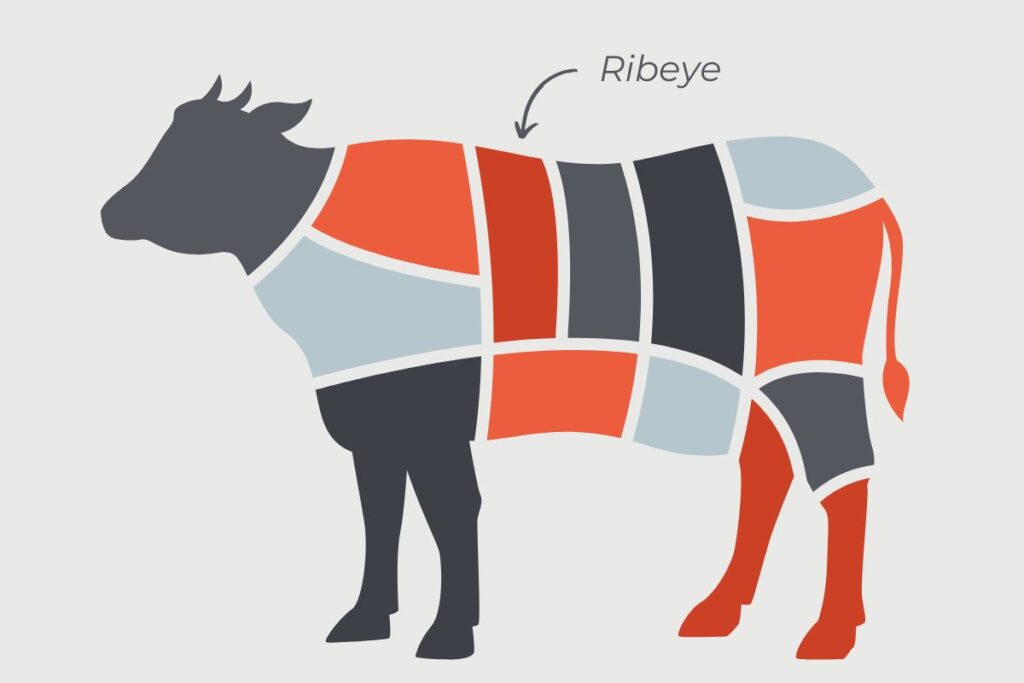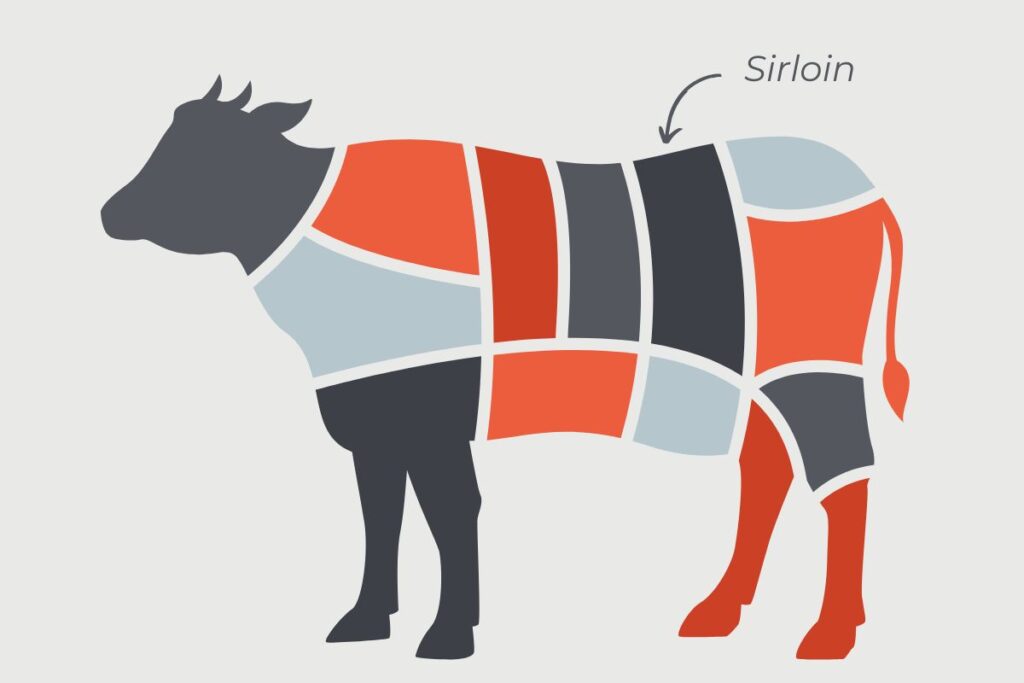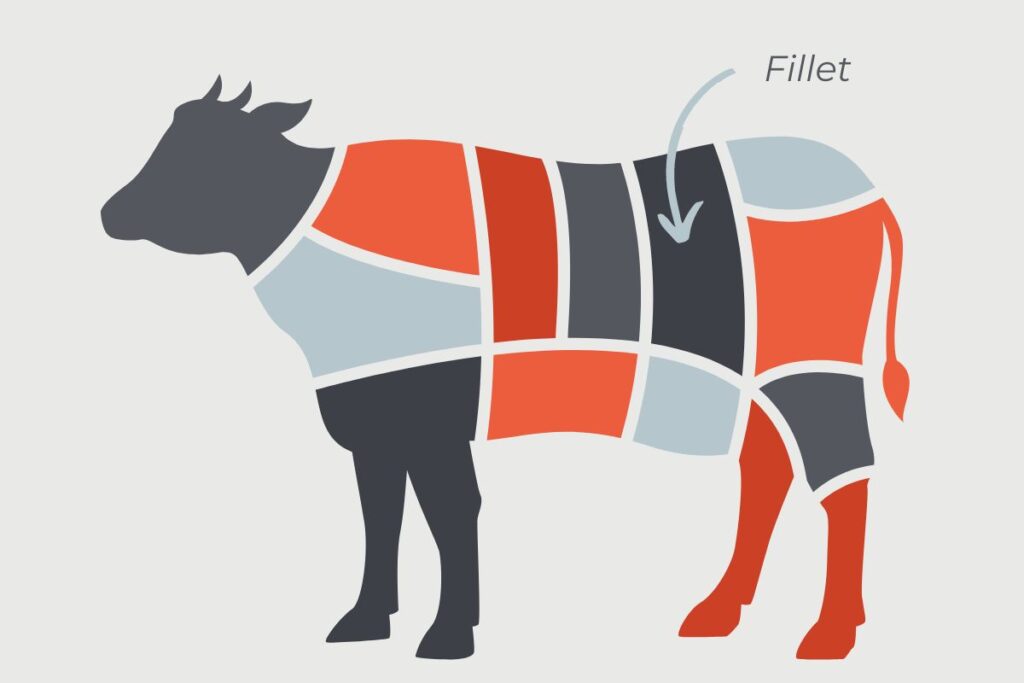What Is The Best Wine With Steak – Are You Missing Out?

Jennifer Williams-Bulkeley
Jennifer is passionate about getting rare and beautiful, small production wines, into the UK market to be enjoyed.
Did you know that the best wine with steak can be influenced by the cut, how it's aged or flavoured and even the sauce you're serving it with?
Share Post:

What is the Best Wine with Steak? an old friend asked me the other day. Now this really is an age old question, but one with many answers. However if you stick to a few basic formulas you can’t go too far wrong. Did you know for example that the best wine with steak can be influenced by the cut and how it is aged or flavoured and even the sauce you’re serving it with?
Why is red wine good with steak?
I think it is important to understand a basic principle first – why red wine with steak? The basic rule of thumb is that you have red wine with red meat and white wine with white but why?
It all comes down to the different compounds and chemicals found in different meats and the fermentation process used to make red wine. The tannins in red wine interact with the protein in meat to make the ideal flavour combination. Tannins soften the fat in meat meaning greater flavour is released, and in turn the fat lubricates your tongue making the wine smoother and reducing any bitterness. A symbiotic relationship you could say!
What type of wine goes best with steak?
Malbecs, Cabernet Sauvignon, Zinfandel, Syrahs and Tempranillos are all common choices – however there are a lot of cool wines out there that really need to be explored if you’re not to miss out.
Cabernet Sauvignon is always a great choice with an unencumbered, no sauce, no fuss, steak. It can have spice, black fruits, liquorice, coffee and various herbs. The full bodied nature of warmer climate Cabernet balances the texture of the meat and the field flavours. The oak and thick skinned nature of Cabernet Sauvignon can make tannins grippy but effective in tenderising the meat.
With a sauce the wines can take on a new complexity. A Cabernet Sauvignon blended with Merlot and Petite Verdot can be more subtle and pick up the nuances of the sauce to enhance the overall experience. Cabernet Sauvignon, especially from Napa Valley, has a reputation for being expensive and extracted. However, dig a bit deeper and you can find a wide range of styles and expressions of Cabernet Sauvignon from regions all over the U.S. along with other steak friendly reds. Finding great value for money from wines that offer an exceptional sensory experience and express where they are from is what we do best at ALLY Wines.
How to pair steak with a specific cut?
The single biggest influence here will probably be the fat content in your meat. The higher the fat content the more generous, full-bodied wine you need, leaner cuts will pair well with lighter wines. Likewise if the steak is to be served well done you are looking for something ripe and fruity. And if you are serving it with a creamy sauce it will go well with an oakier wine.
What wine goes best with Ribeye steak?

Ribeye is one of the richest cuts available. Buttery and Juicy, it is marbled with fat that gives it incredible flavour whether you are frying it or cooking it on the grill.
Wines to choose:
Detert Cabernet Sauvignon, To-Kalon Vineyard, Oakville Napa Valley
Grosgrain Seven Hills Cabernet, Walla Walla Washington
Why choose them:
Pure Cabernet Sauvignon, a natural expression of black currant, coffee, spice and liquorice with a hint of vanilla to round out the expressive fruit. Nothing oaky, extracted or redacted here. From one of the most historic vineyards in Napa Valley.
Washington Cabernet with a rich expression of brooding fruit but a soft hand on the oak. The shifts in temperature and the variation in light and heat make the Cabernet Sauvignons of Washington complex and exciting.
What wine goes best with Sirloin steak?

Sirloin is cut from the large back muscle opposite the fillet steak. It has a big beefy flavour but it must be cooked and rested properly so that it is not chewy.
Wines to choose:
Old Vine Carignan BOLD Vineyards
Why choose them:
As a single varietal, this wine sings. It is sourced from pristine fruit on old vines that are at a higher elevation. It has a kiss of neutral oak that only supports the story line and would be lovely with a Sirloin and its meaty flavor. Carignan is rarely expressed well on it’s own. It can be green, rustic and one dimensional which is why it is often blended to do what it does best, lend structure and a hint of herb. Roasted blackberries, black currants, seared venison, black cherry compote, violets, and black olives.
What wine goes best with Fillet steak?

Fillet is a very tender cut – mainly because it is a muscle that does the least amount work. It also has very little fat running through it, so it doesn’t have quite as much flavour as some other cuts.
Wines to choose:
Pickberry Merlot GAIL Wines Sonoma Valley
Why choose them:
There is purity of the varietal in this wine. The black fruits of plum and boysenberry are well integrated with a swathe of sage and rose that makes this wine a very pure expression of Merlot. It is not big and heavy, but medium bodied and a joy to explore with and without food. As a partner to Fillet, a leaner cut, the wine would come into its own with the tenderness of the meat.
What wine goes best with a Rump steak?

Rump is one of the harder working muscles taken from a section of the hindquarter. It does therefore have a firmer consistency but very flavourful. You can get prime rump and premium rump which looks a lot like Fillet steak, but more economical. You can marinate Rump, which makes it more tender but may affect what sort of wine you choose to serve with it.
Wines to choose:
Fine Disregard Pato Vineyard Mataro
Why choose them:
A complex wine leaning exuding eucalyptus and sage winds it’s way to a medium dark fruit palate that is fun to explore. Blackberry and hints of blueberry combine with the herbs to create a cacophony of exciting scent and taste. Medium bodied, the tender hands of the winemaker are evident in the clean, balanced nature of the wine.
What wine goes best with Brisket?

Think low and slow for this cut. Located in the breast it is fabulously flavourful and tender when cooked for a long time on a low heat. You can pop it in your slow cooker, oven, BBQ or smoker and serve as pulled beef. The wine you select will depend how you cook it but if you’re smoking it you’ll need something that will stand up to this intense flavour.
Wines to choose:
GAIL Red Table Wine – Zinfandel
Why choose them:
The lovely deep purple fruits of Zinfandel can bring long cooked beef to life as the texture and usually heavier sauce needs nice fresh fruit to lift the broken down sinews. Ripe plums and damson stand out and a fresh zing of boysenberry brings the wine to its full approachable self. A kiss of oak provides a vessel for the fruit and delivers a lovely pairing.
What wine goes best with Steak Stir Fry?
Everyone loves a stir fry right? Quick and hugely versatile you can opt for asian inspired, south American or a classic stroganoff. Ask your butcher for tail fillet and you’ll get a lonely tender stir fry without the premium price tag.
An Asian-style stir fry, is usually well accompanied by a sweeter more medium-bodied red which will add balance to the spice.
Wines to choose:
Why choose them:
An interesting combination of red and black cherry that is woven around a touch of oak with a line of Red Mountain’s distinct acid profile running through it. The supple fruit is a nice complement to the sticky, asian spice that is often found in stir fry. The traditionally German varietal from cooler climates has found a new expression in the shifting diurnal temperatures of Red Mountain. This wine is also a winner with a juicy beef burger.
What wine goes best with Béarnaise sauce?
Nothing complements a steak like an incredible sauce and Béarnaise is such a classic. This must then be considered though when selecting the accompanying wine.
Wines to choose:
Cadence Bel Canto Cara Mia Vineyard 2017 Cabernet Franc, Merlot and Petite Verdot.
Why choose them:
The austere yet exciting blackberry, blueberry and red plum that run through the palate are met with hints of thyme and lavender and rounded out with spice. The wine has great structure supporting lovely fruit. The elegance of the Cabernet Franc is a winning combination for the Béarnaise.
What wine goes best with Peppercorn sauce?
A creamy Peppercorn steak sauce is bold and peppery with onions, garlic and cream. It has a little bit of heat and spice from the peppercorns and lots of flavour. A Peppercorn sauce needs something un-oaked ideally with a hint of spice.
Wines to choose:
Dunites Sans Soufre, San Luis Obispo
Peay Bruma Syrah, West Sonoma Coast
Why choose them:
The pronounced notes of white pepper and spice can lend a complementary hand to peppercorn sauce with hints of green peppercorn and olive running throughout. Onions, garlic and cream are stables in the Northern Rhone, the home of some of the world’s best Syrahs. The expressions hailing from the US can vary from warmer to cooler climates and I would lean towards cooler climate Syrah.
What wine goes best with Blue Cheese sauce?
Somehow salty, sour, tangy, unctuous and luxurious all at the same time blue cheese sauce on a steak is something special. But what to serve with this thing of beauty?
Wines to choose:
Sandar and Hem Merlot, Cabernet Sauvignon Blanc and Cabernet Franc
Why choose them:
The unique blend with Merlot dominance from a cooler site in Santa Cruz makes this wine fresh and yet complex with lighter dark fruit kissed with the coffee and eucalyptus of the Cabernet Sauvignon with the bright more red fruit of the Cabernet Franc. The complexity of the cheese can be fully covered whether it is Stilton, Roquefort or Barkham Blue.
How long should I let my wine breathe for?
Allowing red wine to breathe helps to release its aroma, as well as allowing the flavour to develop and softening the tannins.
The length of time you leave it depends on the age, how well you aerate it, the sort of wine it is, and the percentage of alcohol it contains. Merely opening the bottle isn’t usually enough, it is much better to empty it into some sort of decanter.
If your wine is over 10 years old, you may not need to do anything. Try a small glass before you decant it. If it’s younger pour into a decanter for about 1 to 2 hours for a smooth, velvety texture. For lighter or less alcoholic wine 30 minutes should be sufficient.




